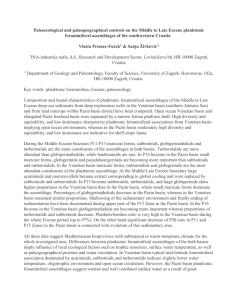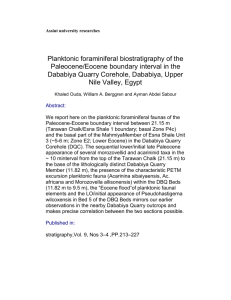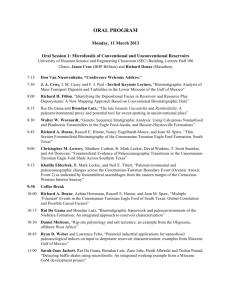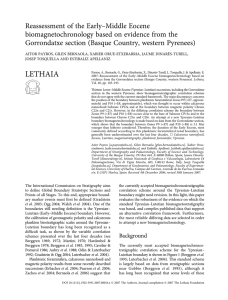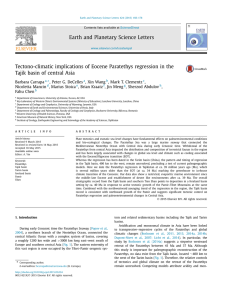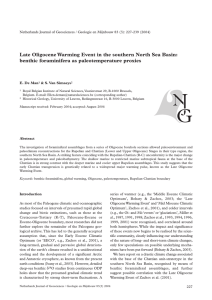Croatia
advertisement
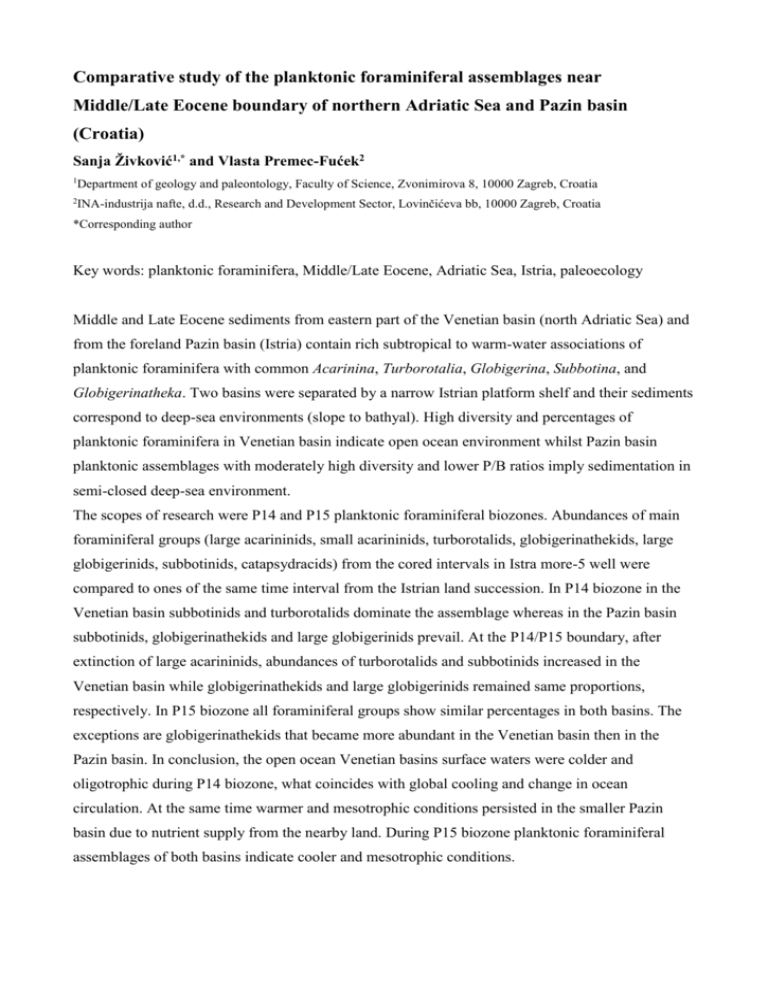
Comparative study of the planktonic foraminiferal assemblages near Middle/Late Eocene boundary of northern Adriatic Sea and Pazin basin (Croatia) Sanja Živković1,* and Vlasta Premec-Fućek2 1 Department of geology and paleontology, Faculty of Science, Zvonimirova 8, 10000 Zagreb, Croatia INA-industrija nafte, d.d., Research and Development Sector, Lovinčićeva bb, 10000 Zagreb, Croatia 2 *Corresponding author Key words: planktonic foraminifera, Middle/Late Eocene, Adriatic Sea, Istria, paleoecology Middle and Late Eocene sediments from eastern part of the Venetian basin (north Adriatic Sea) and from the foreland Pazin basin (Istria) contain rich subtropical to warm-water associations of planktonic foraminifera with common Acarinina, Turborotalia, Globigerina, Subbotina, and Globigerinatheka. Two basins were separated by a narrow Istrian platform shelf and their sediments correspond to deep-sea environments (slope to bathyal). High diversity and percentages of planktonic foraminifera in Venetian basin indicate open ocean environment whilst Pazin basin planktonic assemblages with moderately high diversity and lower P/B ratios imply sedimentation in semi-closed deep-sea environment. The scopes of research were P14 and P15 planktonic foraminiferal biozones. Abundances of main foraminiferal groups (large acarininids, small acarininids, turborotalids, globigerinathekids, large globigerinids, subbotinids, catapsydracids) from the cored intervals in Istra more-5 well were compared to ones of the same time interval from the Istrian land succession. In P14 biozone in the Venetian basin subbotinids and turborotalids dominate the assemblage whereas in the Pazin basin subbotinids, globigerinathekids and large globigerinids prevail. At the P14/P15 boundary, after extinction of large acarininids, abundances of turborotalids and subbotinids increased in the Venetian basin while globigerinathekids and large globigerinids remained same proportions, respectively. In P15 biozone all foraminiferal groups show similar percentages in both basins. The exceptions are globigerinathekids that became more abundant in the Venetian basin then in the Pazin basin. In conclusion, the open ocean Venetian basins surface waters were colder and oligotrophic during P14 biozone, what coincides with global cooling and change in ocean circulation. At the same time warmer and mesotrophic conditions persisted in the smaller Pazin basin due to nutrient supply from the nearby land. During P15 biozone planktonic foraminiferal assemblages of both basins indicate cooler and mesotrophic conditions.
